Aldo Bugada is a trained master carpenter. Together with his brother, he runs a medium-sized family business in the fourth generation. Mainly they produce cabinets, tables, doors and windows. During my visit, I also saw a number of old pews that are being professionally restored at the Falegnameria Fratelli Bugada. Therefore, when he started blowing the alphorn with his wife in 2014, the question arose whether he should buy an alphorn or build one himself. He decided to give it a try. About a year and a half later, the first series of ten alphorns was completed.
Aldo has drawn his own alphorns from scratch. He received constructive feedback from well-known alphorn players around the Nendaz Festival – especially Arkady Shilkloper and Olivier Brisville, and later Robert Scotton. Among other things, Shilkloper came up with the idea of the screw connections. Over time, Aldo has also improved the bore. The Bugada alphorns are made in the family business; a young employee does grinding work and assists Aldo in wrapping them with pedigree cane. Scales and cups are milled with CNC. This involves the use of a very imposing machine that could work to the thousandth of a millimeter. However, Aldo stresses that this theoretical accuracy is illusory when working with wood. Even small variations in the turning of the tubes and different grains resulted in each alphorn intonating and sounding slightly different.
Bugada alphorns are wound and built entirely in spruce. Aldo sources the wood for this from Florinett in the Engadine and from the Dolomites. When I visited, he also had an alphorn in Red Cedar on order. Its wall thickness is 6-6.5mm. Cup rim and barrel have a simple design. On the pretty ring at the end of the pedigree is inset a Swiss and Ticino coat of arms. On the instruments I tried out, the little feet were still empty – the customer’s name will be engraved there when the instrument is finished. The last layer of varnish on the outside is also applied either glossy or matte, depending on the customer’s wishes; on the inside, the alphorns are oiled.
The four-part design with screw connections is particularly striking. The gold anodized bushings are screwed into each other with several turns; a rubber ring additionally seals (in the photo below this ring is still missing).
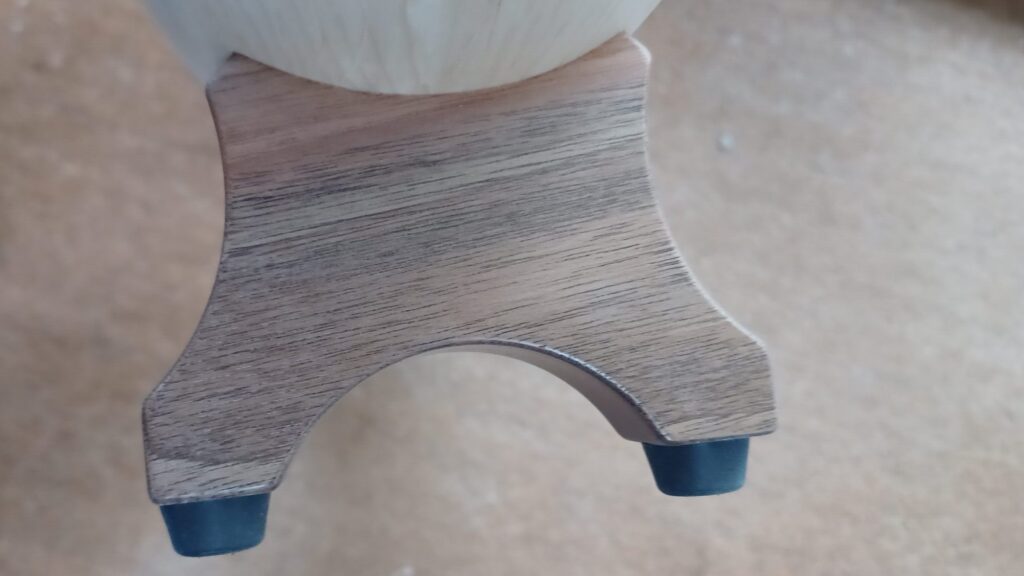
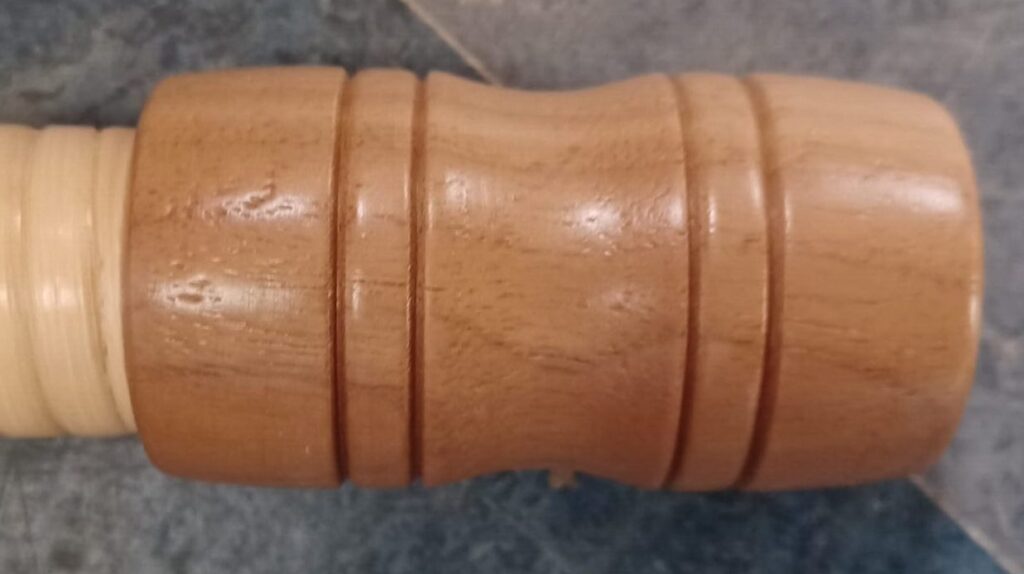
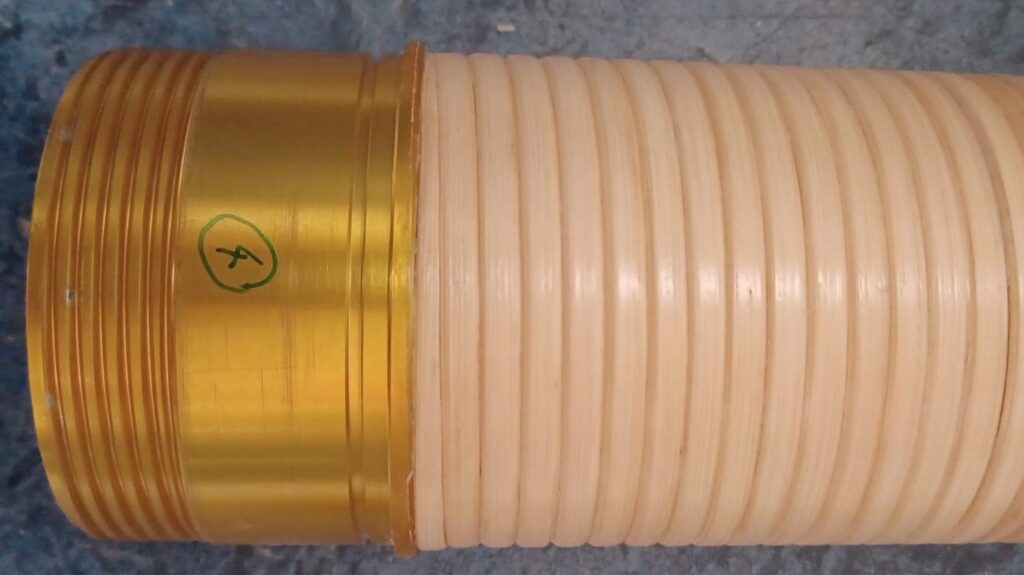
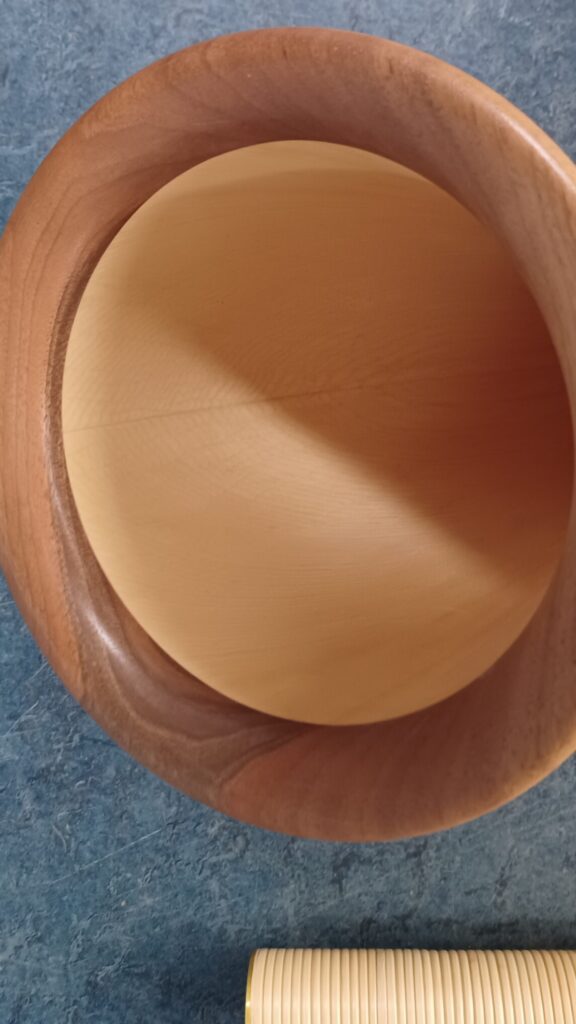
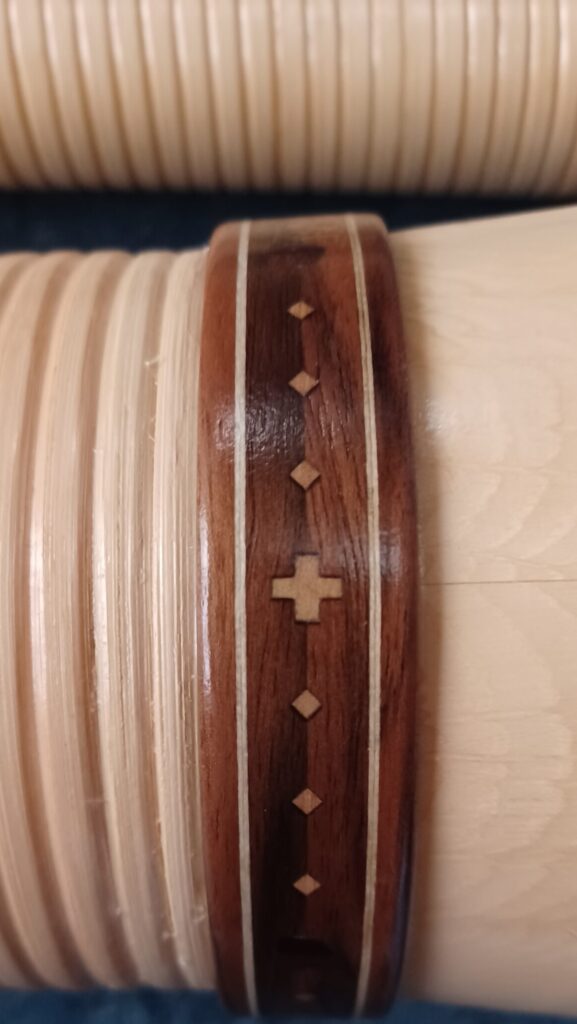
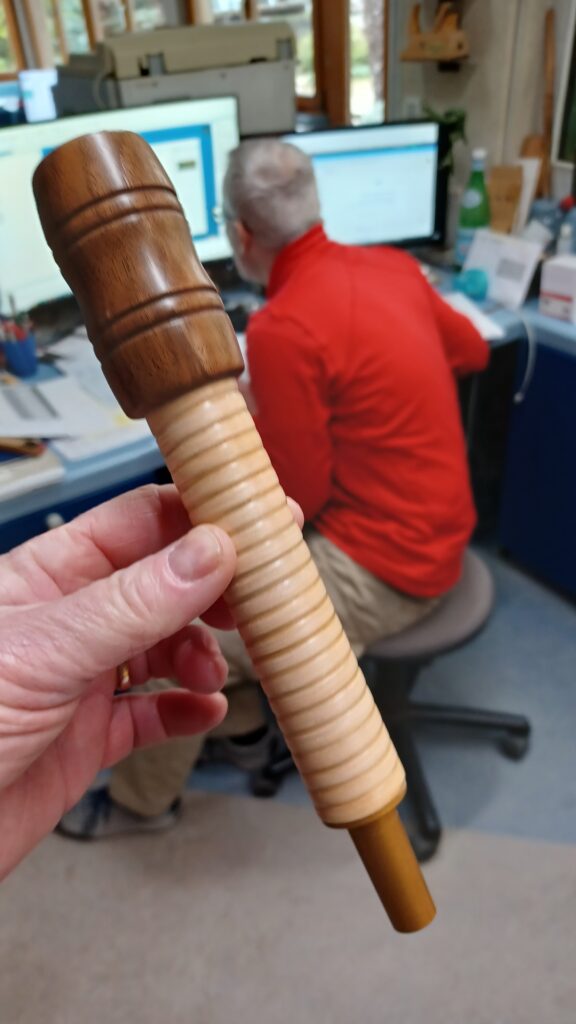
I was able to try out two alphorns during my visit. Thanks to the wintry outside temperature, the tuning shifted from a1=442hz to the magical a1=432hz. On the appropriately adjusted tuner app, the intonation seemed to be quite good in itself. I immediately noticed the low weight of 2.5kg. The low mass is noticeable when playing as expected: very agile, brilliant in sound (perhaps a bit dry), easy response, but in the dynamics and tonal stability strongly dependent on precise control and airflow. Aldo builds the barrel with a slightly shallower taper. I therefore had to play on one of his ebony mouthpieces instead of my usual mouthpiece. This probably explains why I had some trouble at the very top (from h2). On the other hand, the lower registers, including the pedal tone, responded very well.
Aldo builds one to two series of ten per year. Before the final polish, he stores his alphorns like a good wine for six months. Customers can try these horns with him; the finishing (matte or glossy finish, engraving of the personalized foot) is then done within 3-4 weeks.
The price of a Bugada alphorn including carrying case and mouthpiece is 4’100 CHF. For tuning in F, he prefers extensions – the short additional tubes thus fit into the handy pocket of the four-piece horn, making it more convenient to change tuning during a concert. Aldo sells his horns in Ticino, of course, but also in German-speaking Switzerland and to France. Since the visit of the Tamagawa Alphorn Club in the context of the documentary “Banzai Switzerland!” (on Playsuisse only in Switzerland or via VPN), there is also a special relationship with Japan; the promotional trip to Japan, cancelled because of Corona, is to be made up for next year.
Aldo’s website is currently being redesigned. An alternative portrait is available here. Below some more impressions from my visit in February 2023.
Conclusion: The four-piece construction with screw bushings makes this lightweight and movable alphorn from Ticino stand out from the crowd.
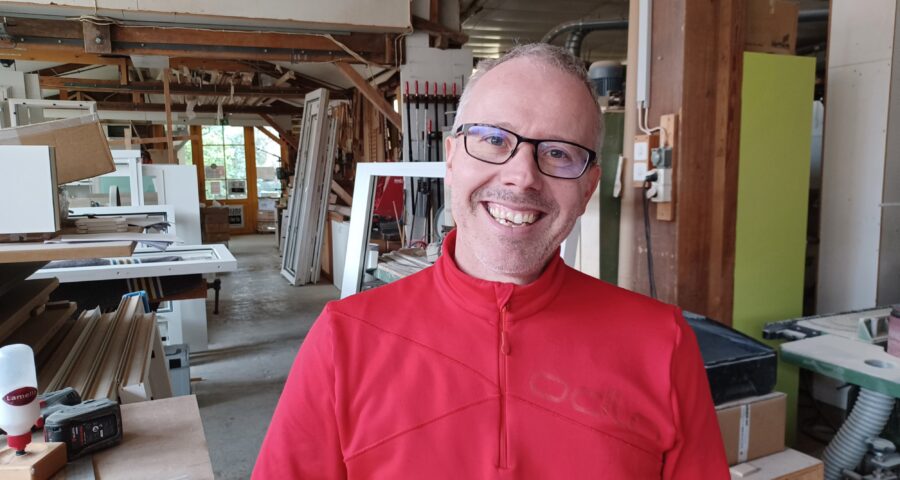
Leave a Reply